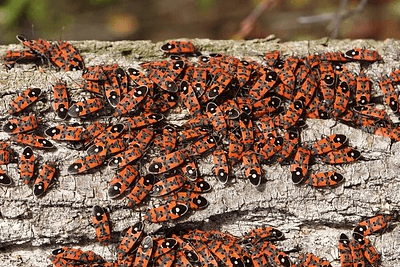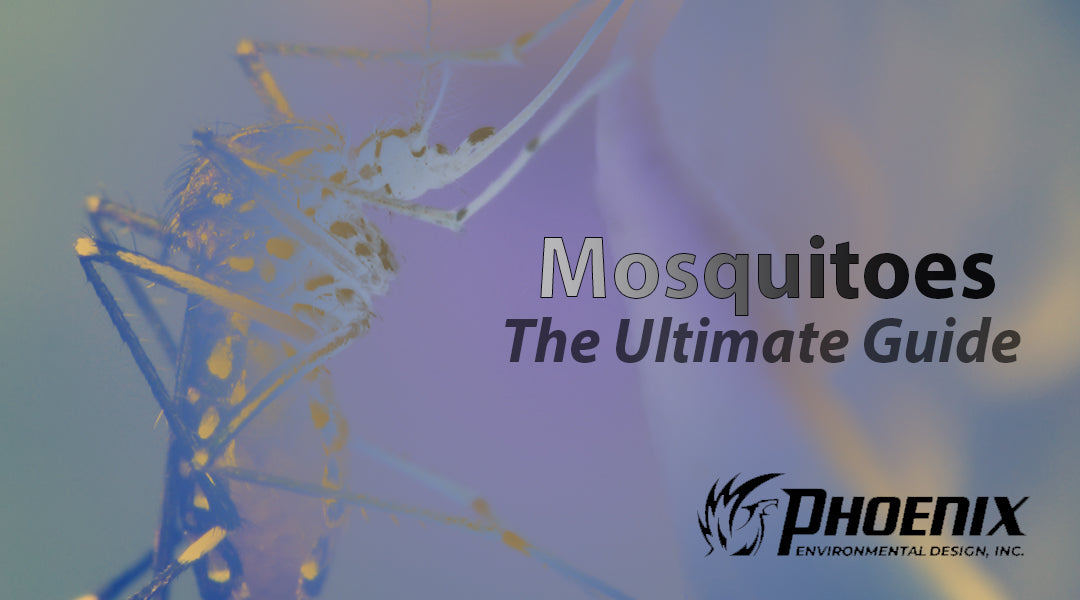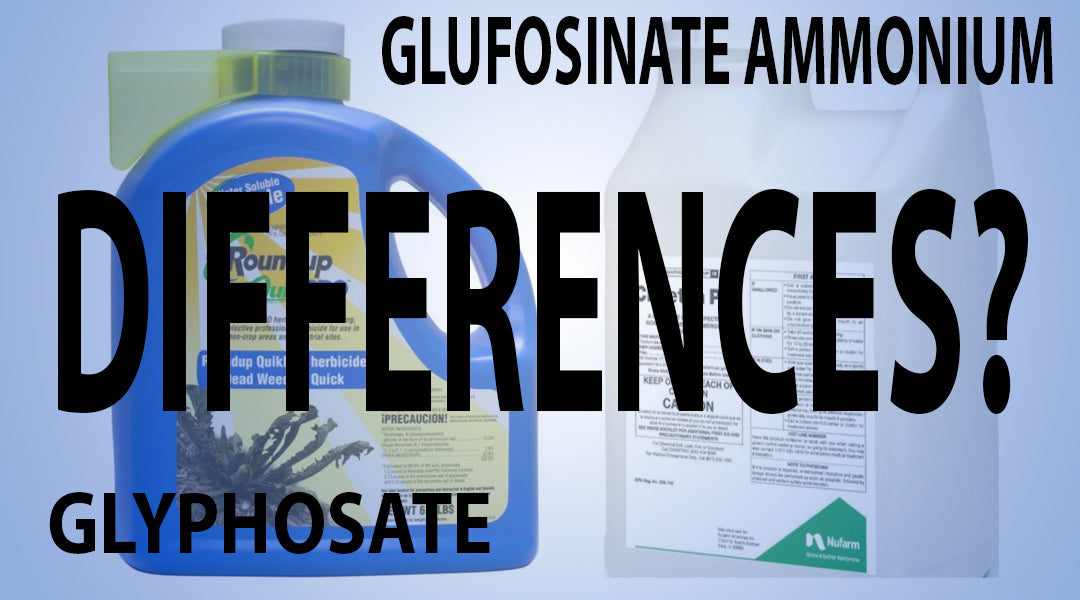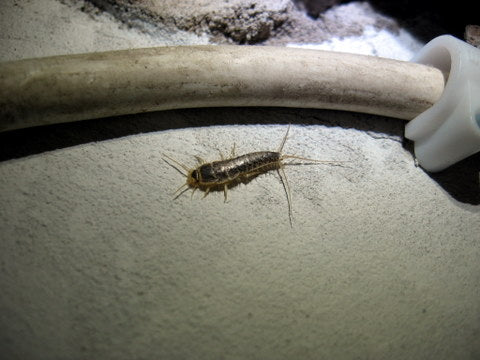
NC State Extension Publications
Chinch bugs are like the silent killers of lawns and even a pest to humans. They're stealthy with survival skills comparable to a Navy Seal, but there's hope. In this comprehensive guide, you'll be armed with the knowledge and tools to put the cinch on the chinch.
What are Chinch Bugs?
So, what are chinch bugs? They’re about 2.5 cm long. That’s right, a fraction of an inch, which means they’re undetectable to the naked eye. If you’ve ever seen dry, brown, dean patches of lawn from the size of an average palm to two-foot squares, (probably your sod), then you’ve got a chinch bug infestation.What Do Chinch Bugs Look Like?

USU Extension - Utah State University
If you’re lucky enough to catch a live chinch thug in action, you’ll look for a pair of white wings neatly folded atop a black body. On the top of the wings closest to the body are block triangles. When a chinch bug is immature, they’re bright orange.How to Inspect for Chinch Bug Damage
One secret to making certain that your damage is caused by chinch bugs is having a look at where the brown damage starts. If the lawn only has a few patches here and there, but the drive and pathways have more damage, you may consider that this is the work of the chinch marauder. They have this kind of signature.
Also notice if your lawn looks like it’s been through a drought. If it has, then you may have a larger issue with the bug. They’re not always an all around bug they like certain grasses although they aren’t limited by these listed below. They love all kinds of grasses and the heavier and more thatched the better.
If you see a reddish-brown color, then that part of the lawn is about to die. This specific discoloration appears just before it happens.
Some of their favorite grasses are:
Kentucky Bluegrass
Bentgrass
Perennial Rye
Red Fescue.
If you still aren’t sure if you have a chinch bug infestation try this trick. Take a small soup can and cut the bottom off , make sure the can is empty and the top open. Put the can into the lawn about 7-8cm deep. Wait and watch. The Chinch bugs will begin to get restless and climb to the surface. If you see over 100 then you need to get control of it right now before you lose your whole lawn.
They work fast. The have nothing better to do all day and night than to multiply and eat your lawn, so fast action is necessary.
Will Grass Grow Back After Chinch Bugs?

Chippers Inc.
We won’t say no, but it takes unbelievable effort. If you didn’t find it thrilling to concentrate on your lawn before, now would be a time to make it a hobby. So, why so hard to bring a lawn back after a chinch bug attack? They’re tiny but have some formidable jaws. They bite into the grass blade and dehydrate it by feeding on the juices. They’ll make life easier for themselves by injecting an enzyme that’s deadly to the grass and will dehydrate it to where the grass can’t make the nutrients it needs to grow.What Causes Chinch Bugs in Lawns
The main attraction for a chinch bug is a thick or thatched lawn. Dethatching your lawn is a great idea and making sure it’s cut regularly.How to Get Rid of Chinch Bugs
There are many ways to help get rid of and discourage chinch bugs. It’s not always easy and if you have a bad infestation, already you may have no choice to go for toxic insecticides. If you go that route, then make sure you’re using them in the way that’s directed. Bees and other insects humans need for their survival are harmed but those chemicals.
Preventing the chinch bug: mow at the correct height, take the thatch out of the lawn, aerate the ground, and water in a consistent manor.
You can use nature to combat the chinch bugs that are already present. There are two effective bugs that are available for purchase. The ladybug and lacewings. The chinch bug isn’t interesting in messing with either, so you can incorporate these into your yard and garden. Use endophyte enhanced grass seed even if your lawn is full this will help the issue by repelling them. And last, you can use pyrethrin or horticultural soap, which are the natural ways and gentler but are the least effective.
Keeping Chinch Bugs Out of the Lawn

DIY Chinch Bug Pest Control
How you get rid of chinch bugs depends on how you want to do it. Are you concerned about eradicating them naturally? Or are you just concerned with extermination? We’ve already mentioned the best chinch bug pest control you can find on the market that professional golf courses use.The natural way is to purchase the ladybugs and lacewings. There are other substances you can mix yourself that don’t contain major toxic pesticides. One of those home remedies is using dish soap. Any kind will do, but quality may matter as you need to have a good soapy film left behind. Maybe Dawn liquid since it’s powerful enough to get crude oil off of animals, or so they say, it should remedy a small bug.
Mix 2 tablespoons of dish soap to 2 gallons of water and attach to a sprinkler drench or a hose with a bottle filled with same but adjust amounts to the size of the drum.
Farms and Other:
It’s important to know that even if you’re growing vegetables or corn and wheat, the chinch love to attack those places. They spend the winter in hibernation and will mate soon after they wake up. 20 eggs per day and they’re capable of this daily task for more than 3 weeks. It doesn’t seem like much, but if you don’t get a handle on them before June and take care of the grubs and adults you’ll end up with a damaged crop.
Incorporate some more natural pest control for your crops within your normal pest control for other crop damaging pests each year.
More Tips and Things to Know:
Not every lawn, farm or homestead is created equal. It’s important to know what your risk is for damage from Chinch bugs are. Here are some tips to make sure your outdoor space is not the ideal Chinch bug habitat. There are simple and inexpensive ways to take stock right now in your lawn or other homestead.
1. Stand back and survey your land.
2. Do you have dead grass? If so, you must clear it out and reseed the patches to replace it with healthy, well-maintained grass.
3. Do you have thatched patches? The love this more than anything. It’s warm and inviting and a great place to hide and hibernate. Before any frost or snowfall, grab it and unthatch it.
4. Where is the grass too long? Is it more than 1cm thick? Then mow and rake the loose, dead stuff away.
5. For wheat crops don’t plant a winter cover crop of wheat. Plant potatoes or any legume, underground root vegetable.
6. Use the safer and less toxic way of finding and eradicating chinch bugs. The dish soap method and drench extensive areas at a time. Then place a large sheet or thin blanket over those areas for around 20 minutes. When you turn it over, the Chinch bugs should be there. Roll the sheet inward and place it in a barrel with soapy water in it.
Tips on the Application of Insecticides
Applying insecticide is an art for a lawn or farm. Once chinch bug nymphs have infiltrated, then there has to be several attempts at application. The important thing to note is that the chemicals are not active for more than 2-3 days.They have to do their work fast and then be reapplied according to the recommendation on each insecticide. The real fight begins in the summer, all summer, and into early September. The key is not to wait. Begin just as June approaches and continue to fight. Twice a day is the recommended application before 10am and after 6pm.
Recap for Safe and Timely Application:
1. Apply in the summer
2. Apply before 10am and after 6pm
3. Never apply on windy days. It’s not safe for you, and it won’t saturate enough to do the job.
4. Wear protective gear such as gloves, mask and goggles to avoid breathing or touching the particulates on the skin.
5. Make sure the insecticide you’re using actually kills chinch bugs.
6. Make sure your insecticide is a broad - spectrum one.
Make sure you’re watering sufficiently and when evaporation is less likely to occur. One inch per week and do it early in the morning. You can do this after the aforementioned steps when applying pesticide. Watering is essential.
If you have a recurring issue or it’s devastated your whole lawn then replant with pest resistant grasses.
Fescues: For northern climates. Post drought water saved. Check these products out for excellent chinch bug control.
Baseline
Arena
Merit 2F
Demand G
Bifen LP
They're capable of warding off pests including but not limited to the chinch bug year round.
Endophyte and Enhanced Perennial Rye are the only types you need to remember. They make all the brand names on the aforementioned list from these and Fescue grass. You can take sections of your lawn or homestead and start to plant the pest resistant grass. Work your way through the whole lawn. It may be expensive to do the whole lawn but don't let that stop you. Slow and steady wins the race against the infamous chinch bug.






Leave a comment (all fields required)